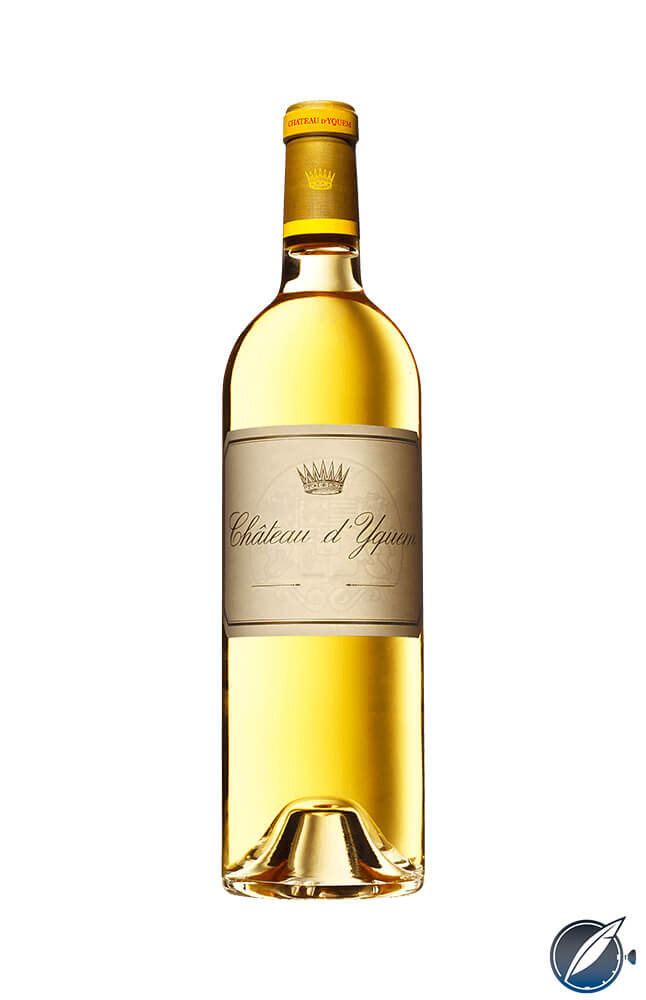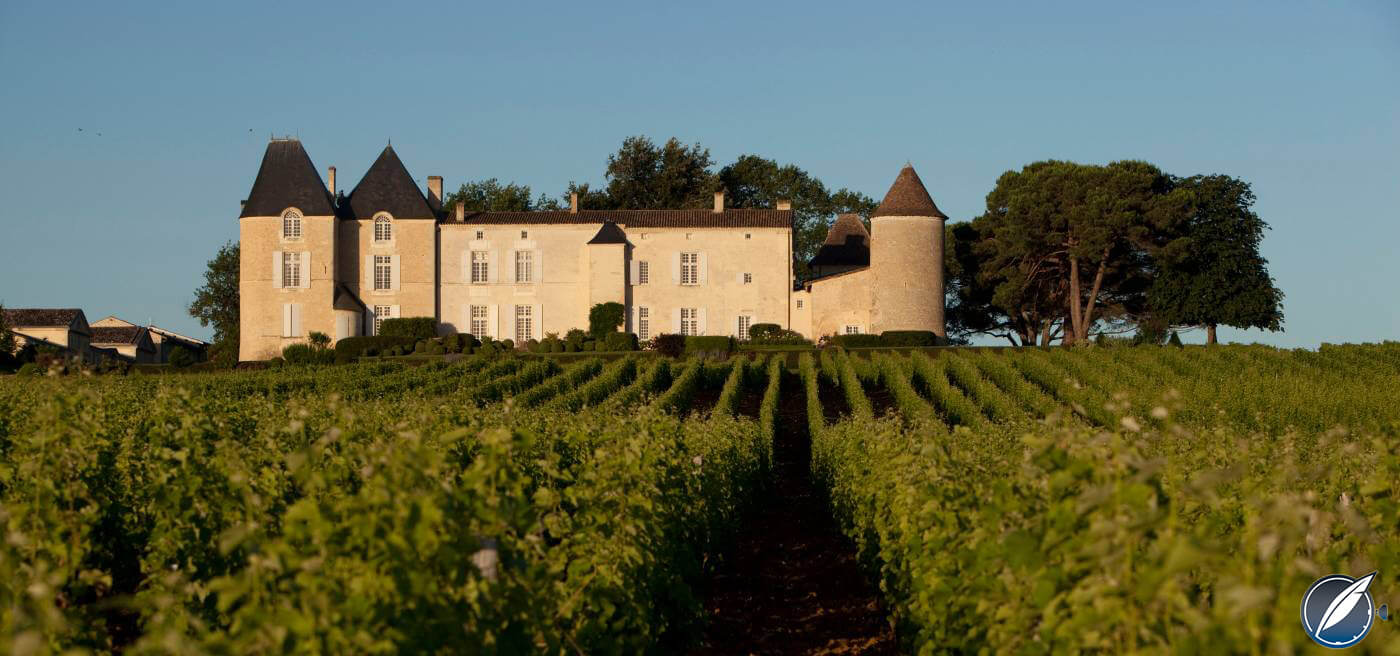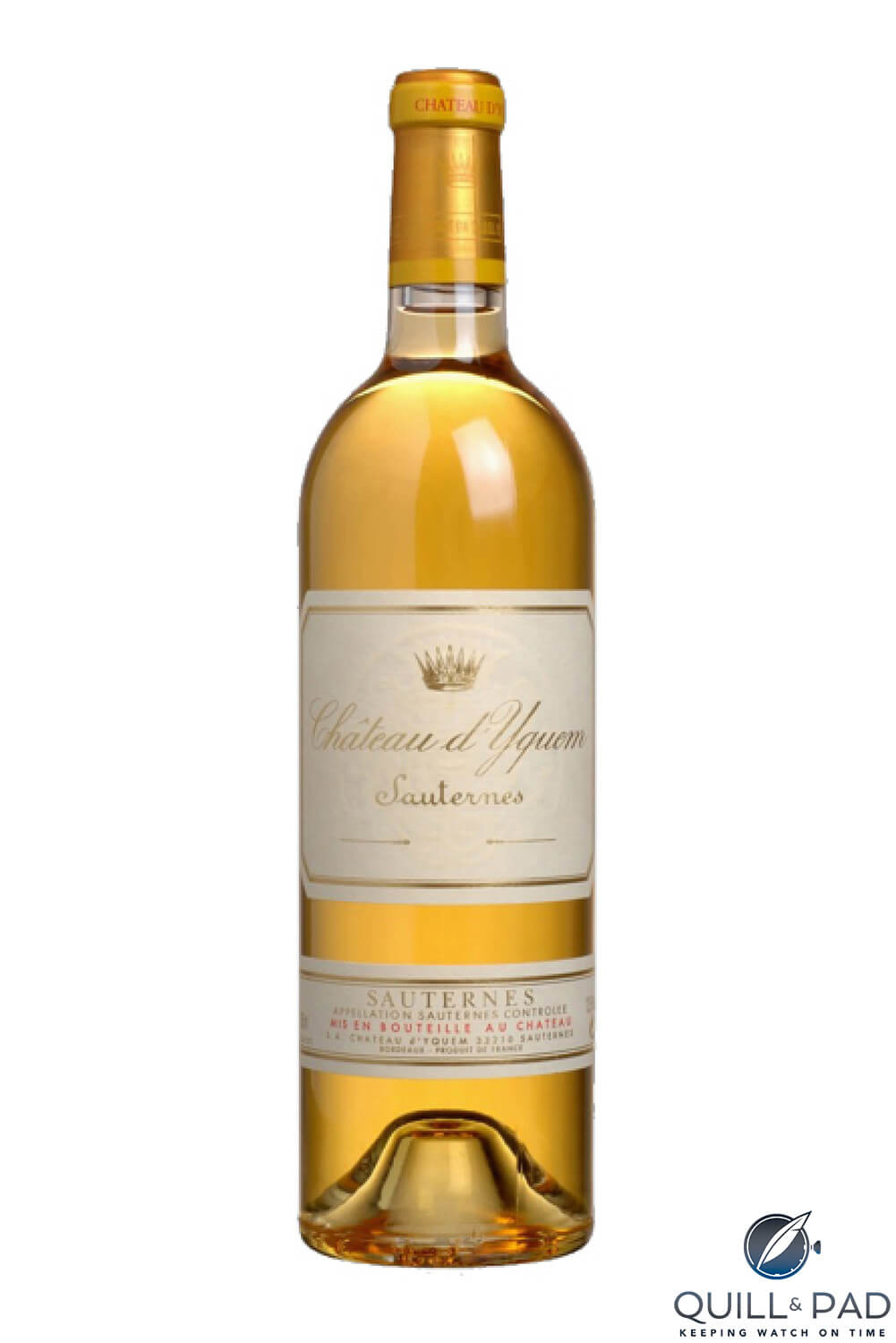by Ken Gargett
Some time ago, we looked at the wine that could be considered the greatest of all: the Domaine de la Romanée-Conti Romanée-Conti, an extraordinary Burgundy.
But what about the greatest white of all?
Possibly a Montrachet (the Domaine de la Romanée-Conti Montrachet would be a serious candidate)? Some of the great German Trockenbeerenauslese and Eisweins? The finest from the Loire?
All good options, but one stands out: Château d’Yquem from Sauternes.

Château d’Yquem
Sadly these days, far too many wine lovers throw up their hands in horror at the thought of anything sweet, but this is a sublime wine and has been for well over a century. It stands head and shoulders over any other from the region.
Occasionally, some of the great Germans match it: think J.J. Prüm, Egon Müller, or Dönnhoff as contenders.
Records at Yquem go back to 1711, with the Lur Saluces family, who held it until recently, taking over in 1785. Fame stretched back that far and further. In 1787, Thomas Jefferson, before he was the American president, was known to have written to the estate seeking to buy a quantity.
In 1999, the family sold to LVMH (owner of Moët et Chandon, Krug, Veuve Clicquot, Cloudy Bay in New Zealand, Clos des Lambrays in Burgundy, and more) after a very antagonistic internal fight.

The Château d’Yquem domain
The estate is 125 hectares, of which 99 hectares are under vine; it is estimated that 80 percent of this is Sémillon and the rest Sauvignon Blanc.
The tiny yields – the famous story is told that each vine in the vineyards gives up just enough of the sacred juice to make only a single glass of Yquem – mean that the average annual production is only around 8,000 cases.
Compare this with the not-too-distant First Growths in Bordeaux, which make around 20,000 to 30,000 cases a year, at prices certainly no less than that of Yquem. It is easy to see that great Sauternes is nowhere near as profitable as red Bordeaux. For a new vintage, depending on local taxes, expect to pay $500 to $800 per bottle.
Consider also that harvest is not once through and then into the winery with the grapes. The pickers will often go over the vines numerous times, only picking those berries that are ideal.
They are, however, not looking for fat, healthy, ripe berries: almost the contrary. They want berries infected by rot – technically, botrytis cinerea, known more romantically as “noble rot.”
For those not familiar with the production of Sauternes, this rot, which arrives with the fogs enjoyed by the region, tends to desiccate the grapes and concentrate the sugars – which is perfect for a rich, concentrated, complex, sweet wine. Once harvested, the grapes receive three pressings and then three years in oak to mature.
A good vintage of Yquem, and there are not many poor ones (there have been a few years where nothing was made, the estate preferring that to releasing a wine that did not meet its exacting standards), will last for decades.
Some have asked if a good vintage, well stored, is even immortal. A wine like the stunning 2001, for example, will live longer than anyone currently alive, of that I have no doubt, although its best drinking may be a window slightly earlier than that.
The 2001 remains the finest young wine I have ever experienced, red or white, and I remain convinced that it will go down as one of the greatest Yquems, if not the greatest of all. That said, it has some stiff competition.

Château d’Yquem
A typical Yquem will be rich, luscious, even fat, yet still complex, with stone fruit, honey, florals, beeswax and much more, yet it will be balanced throughout. That balance is key.
With age, complexity increases, flavors of vanilla, caramel, nougat, butterscotch, crème brulée, and, again, so much more, emerge. The intensity and balance will still be there.
They are beautiful wines at all stages. It is a bucket list wine for those who have not had the immense pleasure as yet. It is a wine to be sipped in reverence on its own or with the finest foie gras. Alternatively, a top Roquefort makes a wonderful contrast.
My greatest “wine day” was spent at Yquem
My greatest “wine day,” for want of a better term, came in my very early days of vinous obsession, way back in 1985. A friend had organized what remains to this day as one of the great tastings of Yquem – 51 vintages. It was the first of those mindboggling vertical tastings that are still popular today.
People came from around the globe (although only around two dozen were tasting), including Alexandre de Lur Saluces and his wife. We were to kick off with the 1980, which was current vintage at the time. The comte kindly brought a bottle of the 1981 for us, pre-release, something Yquem almost never did.
We tasted every vintage that had been released back to World War II and all of the great ones prior to that from the twentieth century.
Four wines were saved for the final dinner that evening – 1959, 1945, 1921, and the 1900 – all considered among the very greatest made by the Château.
An embarrassment of riches, without a doubt, but the proverbial cherry on top came when the 1900 (in glorious form and one of the very best of the day, along with the other three from the dinner, as well as numerous others, too many to recount) was served.
The count rose to his feet and explained that Yquem has what it calls twin vintages. It is not that common to have two stellar years in succession – good, certainly, but not stellar. It does happen (curiously, it seems that there are more often triplets – 1990, 1989 and 1988; 1947, 1948 and 1949; 1927, 1928 and 1929, as examples).
So for years like 1975 and 1976, a fine set of twins, it was necessary to drink them together.
As 1900 was “twinned” with 1899, it was simply not possible to drink one without the other (perhaps some have access to those wines, as opposed to the rest of the world, who would be forced to drink one sans the other – not the harshest of punishments).
And with that, the count pulled a bottle of 1899 from his briefcase.
It seems that every time a bottle of Yquem is opened, something magical happens.
For more information, please visit www.yquem.fr.
You might also enjoy The World’s Best Wine? No Contest: Romanée-Conti By Domaine De La Romanée-Conti.
Leave a Reply
Want to join the discussion?Feel free to contribute!





















































I have 3 bottles of Chateau d’Yquem; 2 from 1988 and 1 from 1990; the color of all three is now more amber than brighter yellow; it has been stored at 56 F always but now worried that it has turned. Should I be concerned?
Hi Craig, some good vintages there, especially the 90. At the tasting above, quite a few of the greatest wines of all were very dark in colour. If you have stored them well – the temperature looks perfect – then you should have no problems at all.